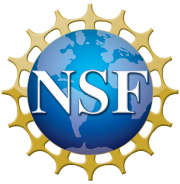Vis-a-thon 2025
Lander at 17:00
Authors
Philip Fan Yang PhD Candidate, University of Rhode Island, Graduate School of Oceanography, Biological Oceanography arcg.is/040mvD marecotec.com/team_member/philip-yang/
COLLABORATOR
Pablo Cazares MFA, Rhode Island School of Design, Sculpture pabloVcazares.com Instagram: @pabloVcazares
Critic
Rafael Attias
To investigate how light can vary in mesophotic coral ecosystems, autonomous oceanographic benthic landers were designed and deployed into the Gulf off the coast of Texas and Louisiana. These landers use sensors to measure biophysical variables, such as photosynthetic light availability, current speed and direction, temperature, salinity, and water turbidity.
All of these factors can influence the survival and healthy function of many different organisms but we do not have a good understanding of how different conditions influence underwater light. Mesophotic coral ecosystems found from depths of 30 m to ca.150 m (some management strategies define 300 m as a boundary) have only recently gained strong attention from the scientific community in the past two decades.
This aspect of the unknown inspires the imagination. The lander sits on the seafloor in this under-researched area, collecting data for months at a time. But what is the meaning of the data that is gathered over these long periods? How do we separate what is significant from insignificant? The metaphor of researcher-as-lander posits new questions. How is insignificance measured in the life and experience of the researcher? What value do we put on labor, on boredom, on millions of images of blue and black “nothing” before we approach the “something”?
INITIAL PROPOSAL NOTECARD
"The original ideas for my collaboration sprang from the museum adventure and continued with the help of RISD critics. The proposal to create a ‘stool’ that represented an oceanographic benthic lander to blur the lines between a coral’s home and our own experience of home, space, time, and environmental forcings evolved over the collaboration."
—Philip
"I helped Pablo put together the ‘lander’ frame after the pieces were laser cut and selected the underwater images from an expedition I went on in August, 2024. I also helped with the transportation of the concrete, gathering of sand, and setting everything up based on a vision that Pablo and I collaboratively iterated on (e.g., Pablo brushed the sand into waves and I suggested we place the photos in a way that leads a viewer down to the seafloor). "
—Philip
This project utilizes laser-cut stacked acrylic, concrete castings made with sand from local Rhode Island beaches, bacterial cellulose samples, and 8 images of blue “nothing” taken by the remotely operated vehicle (ROV) Beagle from MARE©.
"I have not stopped raving about the magical museum tour that we took as a group on the first brainstorming day of VIS-A-THON to anyone who has had the unfortunate (or fortunate) luck of coming within talking distance of me. For the few hours we spent there, I looked and pondered with a purpose, and my favorite part was listening to all the insights other people had about an art piece because sometimes what they said completely changed my whatever perspective I was in at the time."
—Philip
FINAL IMAGES
Tools Used in the Project
Laser cutter Acrylic Concrete Remotely operated vehicle (ROV) Beagle from MARE
Copyright
© Lander at 17:00, 2025

This material is based upon work supported in part by the National Science Foundation under EPSCoR Cooperative Agreement #OIA-1655221.
Any opinions, findings, and conclusions or recommendations expressed in this material are those of the author(s) and do not necessarily reflect the views of the National Science Foundation.




